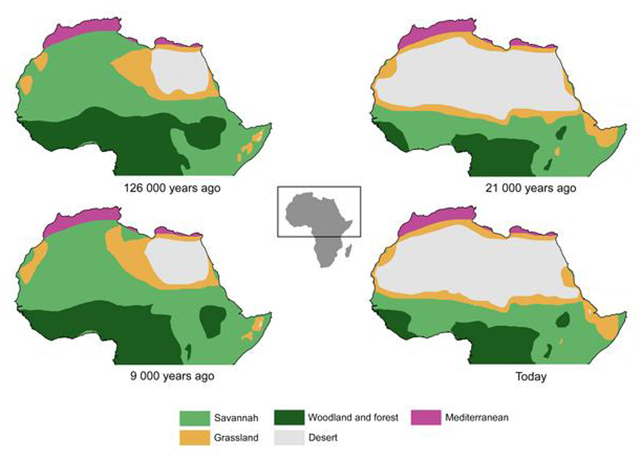Our planet has changed a lot over billions of years, from the location of the continents to the makeup of the atmosphere, and a new study looks in detail at the history of the Sahara desert – which wasn't always an arid wilderness.
Researchers from Finland and the UK reconstructed the periodic transformations of the Sahara over 800,000 years using a new climate model.
Thanks to improvements in the model's accuracy – particularly in terms of atmospheric convection and vegetation spread – the team was able to fill in some of the gaps in what we know about the history of the Saharan region.
"The cyclic transformation of the Sahara desert into savannah and woodland ecosystems is one of the most remarkable environmental changes on the planet," says climate scientist Edward Armstrong from the University of Helsinki in Finland.
"Our study is one of the first climate modeling studies to simulate the African humid periods with comparable magnitude to what the paleoclimate observations indicate, revealing why and when these events occurred."

The researchers focused in particular on what are known as the African humid periods, spans of time when the African continent was much wetter and greener than it is today. The climate model was used to investigate the timing and driving forces behind these periods.
The modeling backed up a long-held hypothesis that African humid periods are driven by Earth's orbital precession: the way it wobbles on its axis across a 21,000-year cycle, which in turn affects variation between the four seasons and the strength of the African Monsoon meteorological system.
As backed up by other data and testing, the precessions would've meant warmer summers in the Northern Hemisphere, more intense monsoons across West Africa, and thus more rainfall across the Sahara.
Another notable finding from the study is that during ice ages – with giant glaciers covering the higher latitudes – the effects of the wobbles in Earth's orbit were somewhat canceled out, keeping northern regions cooler and restricting the African monsoons.
Knowing when the Sahara was wet, green, and inhabited by animals such as hippos can also teach us more about the spread of humankind across the globe. These greening periods may well have provided an opportunity for people (and indeed other species) to move across stretches of the Sahara that were usually very difficult to traverse.
"Our ability to model North African humid periods is a major achievement," says University of Helsinki geoscientist Miikka Tallavaara, "and means we are now also better able to model human distributions and understand the evolution of our genus in Africa."
The research has been published in Nature Communications.
